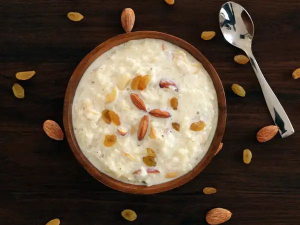 Delhi : Delhi : New Delhi | August 31, 2025
When it comes to post-workout fuel, protein shakes have become the go-to option for fitness enthusiasts. Quick to prepare and packed with protein, they’re often seen as the modern-day secret to recovery and muscle building. But long before the era of supplements, powders, and gym-ready blends, traditional Indian households relied on natural, nutrient-rich drinks to boost energy and stamina. One such powerhouse is Shardai, a centuries-old beverage with deep cultural and spiritual roots in Sikh and Punjabi traditions.
The History of Shardai
More than just a cooling drink, shardai carries history, heritage, and a spiritual connection. “It is a religious drink that was prevalent throughout Punjab. Our gurus used to have it before going to war; it kept them energetic and plump. Made from nuts, rose petals, and seeds, it is a complete powerhouse of energy. We still follow the same recipe that our ancestors did,” says Valati Singh, shopkeeper at Jhilmil Colony’s Sher-E-Panjab.
Traditionally prepared from gurbandi badam (almonds), pistachios, poppy seeds, fennel seeds, black pepper, cardamom, rose petals, and magaj (pumpkin, cantaloupe, or sunflower seeds), shardai is usually blended with milk for a smooth, nourishing drink. In some versions, saffron is added for extra fragrance and richness.
Nutritional Profile and Benefits
According to nutritionist Nikita Soin, shardai is much more than a festive beverage. “It is refreshing, cooling, and particularly suited for hot weather. When prepared with moderate sugar, it can support hydration and even benefit hypertensive patients,” she explains.
The nuts and seeds in shardai are rich in healthy fats, plant-based protein, fibre, vitamin E, magnesium, and micronutrients that support heart and metabolic health. Spices like fennel and black pepper aid digestion, while cardamom and rose petals have soothing properties. For children who don’t enjoy eating nuts, shardai can be a tasty way to sneak in those nutrients—provided the recipe is age-appropriate and allergy-safe.
Shardai vs Protein Shakes
The most common question: can shardai really replace protein shakes?
A traditional 200–250 ml serving of shardai contains around 8–12 grams of protein, depending on the recipe and ingredients. Protein shakes, on the other hand, are standardized, often offering 20–30 grams of protein per serving to meet specific fitness and recovery goals.
“Shardai is richer in micronutrients and healthy fats, but it is usually lower in standardized protein compared to protein powders,” Soin clarifies. “Both have different purposes. While shardai nourishes holistically, protein shakes are designed to target protein requirements.”
In short: shardai can complement your fitness diet but may not directly replace a protein shake—especially if you’re an athlete tracking strict protein goals.
Who Should Avoid It?
Despite its benefits, shardai may not suit everyone.
Nut/seed allergies: Core ingredients make it unsuitable.
Lactose intolerance: Can be adapted with plant-based or lactose-free milk.
Diabetes or weight-watchers: Added sugar and calorie density should be monitored.
Children under nine months: Nuts and seeds are not recommended at this age.
Kidney conditions/potassium restrictions: Should consult a doctor due to naturally high potassium.
The Bottom Line
Shardai is not just a drink—it’s a blend of heritage, spirituality, and nutrition. While it may not match the protein content of commercial shakes, it offers a wholesome mix of vitamins, minerals, and healthy fats that modern supplements often lack. For fitness enthusiasts, it could serve as a natural, nutrient-dense alternative on some days, while protein shakes remain more precise for protein needs.
In the end, perhaps the best choice is not to pit them against each other but to enjoy both—using shardai as a soulful, traditional energy booster and protein shakes as a convenient, modern recovery tool. |